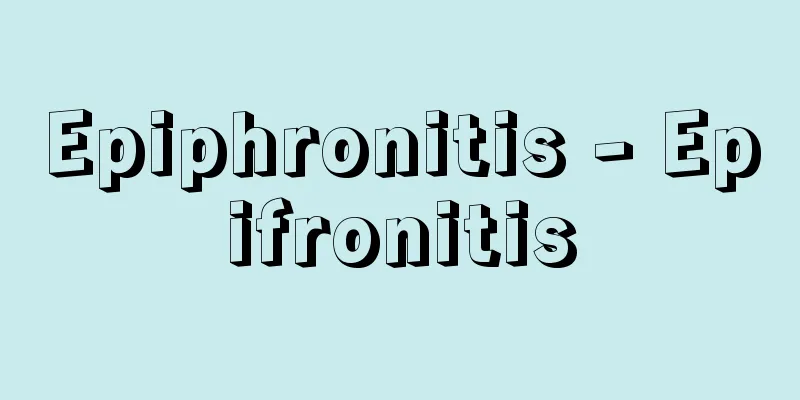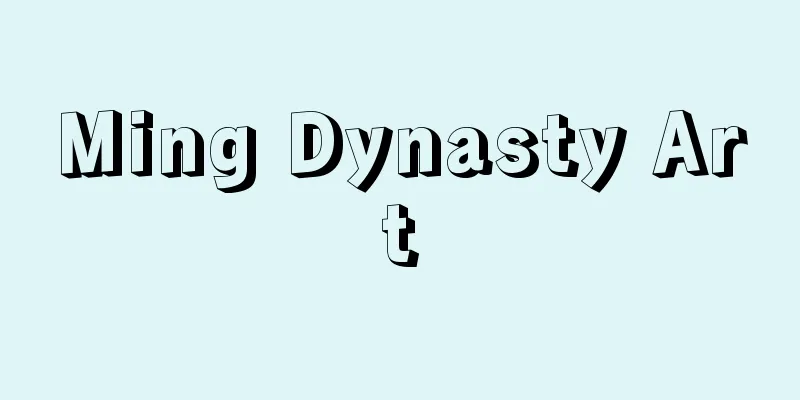Thoracic Outlet Syndrome

|
◎ Compression of nerves and blood vessels to the arm [What kind of disease is it?] [Symptoms] [Testing and diagnosis] ◎ Continue treatment patiently [Treatment] [What kind of disease is it?] It is one of the diseases that cause cervical-shoulder-arm syndrome ("What is cervical-shoulder-arm syndrome?"), which is also a "syndrome" that is a combination of various symptoms. A variety of abnormalities in the thoracic outlet can cause symptoms related to the neck, shoulders, arms, and fingers. The medical names cervicobrachial syndrome and thoracic outlet syndrome are sometimes used interchangeably without any basis, but unlike thoracic outlet syndrome, cervicobrachial syndrome is not a correct medical name. Both of these conditions are confusing because they all have psychological aspects to them. The area surrounded by the sternum (a flat, rectangular bone at the front of the chest), the thoracic vertebrae (the part of the spine above the waist), and the 12 ribs on each side is called the thoracic cage, and contains the heart and lungs. Some blood vessels leave the heart and travel to the arms through a space in the rib cage (the thoracic outlet). The gap between the muscles (scalene muscles) between the first rib and the clavicle, slightly above the clavicle, is the thoracic outlet. This disease was named after the fact that various disorders of this outlet can cause similar symptoms, and it is a very convenient name for diagnosis and treatment. The blood vessels that pass through this exit are the subclavian artery and the subclavian vein. The nerves that branch off from the spinal cord in the neck (brachial plexus) also pass through this exit to reach the arms. Therefore, abnormalities in the thoracic outlet cause a syndrome that is a mixture of vascular symptoms (such as coldness and weakness in the arms) and neurological symptoms (such as pain and numbness in the shoulders and arms). This is called thoracic outlet syndrome. Abnormalities of the thoracic outlet are caused by cervical rib syndrome, scalene syndrome, costoclavicular syndrome, and hyperabduction syndrome. Therefore, treatment of thoracic outlet syndrome requires treatment according to the respective disease that is the cause. However, regardless of the disease causing the syndrome, symptoms of thoracic outlet syndrome are seen, and the diagnosis and treatment methods (non-surgical) are often the same, so we will explain them together. If medication or heat therapy is ineffective and symptoms persist unbearable, surgery may be required. The surgical method varies depending on the four syndromes that are causing the condition. [Symptoms] The main symptoms are a heavy, tired neck, stiffness and pain from the shoulders to the scapular area, fatigue and swelling in the arms and fingers, cold fingertips, and pain and numbness that seems to run from the shoulders to the fingers. Symptoms that seem to be symptoms of facial numbness, headache, nausea, and blurred vision may also be present. Another characteristic of this syndrome is that symptoms can worsen or improve depending on the position and posture of the shoulder. The longer the time that passes since the onset of the condition, the less symptoms will change with posture. This disease is most common in women in their 20s and 30s with sloping shoulders. The condition develops without any particular trigger, and comes in waves of improvement and worsening. In many cases, the symptoms disappear naturally, but in some cases, the condition progresses gradually. [Testing and diagnosis] To check whether the thoracic outlet is narrowed, there is a test to reproduce the compression of the brachial plexus or subclavian artery that passes through it. For this test, the Moray test (see figure "Moray test") is often used to check for tenderness at the thoracic outlet and pain in the arm, and the degree of compression of the brachial plexus can be determined. The following three types of tests are important for compressing the subclavian artery: The Wright test involves lifting the arm of the patient sitting on a chair from the outside and upwards, the Eden test involves pushing the shoulder backward and downwards, and the Adson test involves turning the neck towards the symptomatic arm while having the patient take a deep breath (see figure "Test for compressing the subclavian artery"). If these tests stop the pulsation of the artery on the thumb side of the wrist (the radial artery, which is usually used to check the pulse), then the subclavian artery is considered to be compressed (positive). Even normal people can have positive results, so if the same test is performed on both the symptomatic and non-symptomatic sides, any differences will be clear. If the usual symptoms are reproduced during these tests, the diagnosis will be even more certain. Another important diagnostic test is the exercise stress test (Loose test). In this test, the patient holds both arms in a slightly lower position than when they are in a cheery position, and bends and straightens the fingers. Even in normal people, both arms become tired, but if the patient has this disease, the patient will be unable to endure the exercise and will have to stop. If the patient can continue this exercise for more than three minutes, it is considered normal, but severe patients cannot continue for even 30 seconds. Thoracic outlet syndrome can be diagnosed when a patient has symptoms characteristic of this disease in the neck, shoulders, and arms, one of the arterial compression tests is positive, an exercise stress test is positive, and it is clear that there is no disease of the cervical spine or other neurological diseases. It is often difficult to distinguish this from cervical spine diseases, so it usually takes a long time to diagnose. [Treatment] Thoracic outlet syndrome is not a rapidly progressing disease and may heal naturally, so it is important to take your time and receive treatment slowly. You should persevere with exercise therapy that involves moving your neck and shoulders (similar to radio calisthenics). Heat therapy to the neck, shoulders, and arms, as well as medications such as anti-inflammatories and muscle relaxants, are often effective. A local anesthetic may be injected into the area above the clavicle that is painful (in the anterior scalene muscle). Once such treatment is started, it is best to continue it for at least 2-3 months. If symptoms do not improve despite continued treatment and begin to interfere with daily life, surgery may be considered. However, the cause of thoracic outlet syndrome is still unclear, and surgery is not necessarily very effective. Surgical treatment varies depending on the underlying disease: ■ Cervical rib syndrome The cervical vertebrae do not normally have ribs like the thoracic vertebrae, but some people are born with a rib (called a cervical rib) on the seventh cervical vertebra (the lowest cervical vertebra, just above the thoracic vertebrae). The cervical ribs are located above the first rib and are a common cause of narrowing of the thoracic outlet. They are easily found on a frontal X-ray of the cervical spine. It is often discovered by chance in people who have no symptoms, and the presence of cervical ribs does not necessarily mean that one is ill. However, if this is the cause of thoracic outlet syndrome and conservative treatment does not improve the condition, surgery to remove the cervical ribs is available, which is a highly effective treatment. ■Scalene syndrome This occurs when the scalene muscles tense and narrow the thoracic outlet, but it is not well understood what causes this tension. By injecting a contrast agent into the subclavian artery and taking an X-ray of the blood vessels (angiography), the compression at this area can be seen and a diagnosis can be made. Only when conservative treatments are ineffective and the diagnosis is very clear, can a surgical procedure be performed to separate the scalene muscles (anterior and middle scalene). ■ Costoclavicular syndrome This occurs when the space between the first rib and the clavicle becomes narrow. This condition is often seen when the clavicle fracture heals while remaining deformed. In addition, women in the final stages of pregnancy may show symptoms of this condition because they often tuck their shoulders back. Although rarely performed, a surgical procedure involves removing the first rib. ■ Hyperabduction syndrome The nerves and blood vessels emerge from between the ribs and collarbone and run through the armpit into the armpit. Just in front of the armpit, a muscle called the pectoralis minor covers these nerves and blood vessels from the front. Normally, when you extend your arm out to the side and then lift it upward (shoulder abduction), the pectoralis minor muscle is stretched. When the pectoralis minor muscle becomes abnormally tense, causing thoracic outlet syndrome, this is called hyperabduction syndrome. This condition can be seen in people who often have to stretch their arms above their heads when working in the painting industry, and in teachers who often write on blackboards with chalk. Even healthy people can experience similar symptoms (numbness, fatigue) if they hold on to a train strap for a long time. To confirm the diagnosis, an angiogram must show that this muscle is compressing an artery. In rare cases, surgery to separate the pectoralis minor muscle may be performed. Source: Shogakukan Home Medical Library Information |
|
◎腕への神経、血管が圧迫される [どんな病気か] [症状] [検査と診断] ◎根気よく治療を続ける [治療] [どんな病気か] 頸肩腕症候群(けいけんわんしょうこうぐん)(「頸肩腕症候群とは」)をおこす病気の1つですが、これも、いろいろな症状が複合した「症候群」です。 胸郭出口部のさまざまな異常が原因となって、くび、肩、腕、指につながりのある症状が現われます。 頸肩腕症候群と胸郭出口症候群という病名が、なんの根拠もなく、同じように使われることがありますが、胸郭出口症候群とちがって、頸肩腕症候群は正しい病名ではありません。 いずれも、症状のなかに精神的な側面がみられる症状群であるだけに、混乱をまねいています。 胸骨(きょうこつ)(胸の前方にある平たい長方形の骨)、胸椎(きょうつい)(背骨(せぼね)の腰より上の部分)、および左右の12本の肋骨(ろっこつ)で囲まれた部分を胸郭(きょうかく)といい、その中に心臓と肺が納まっています。 心臓から出た血管のあるものは、胸郭のすき間(胸郭出口)を通って腕につながっています。 鎖骨(さこつ)の奥から少し上の、第1肋骨と鎖骨の間にある筋肉(斜角筋(しゃかくきん))のすき間の部分が胸郭出口です。この出口のいろいろな障害で、同じような症状が現われることがあるために、この病名がついたのですが、診療や治療のうえで、非常に便利な病名です。 この出口を通る血管が、鎖骨下動脈(さこつかどうみゃく)、鎖骨下静脈(さこつかじょうみゃく)です。くびの脊髄(せきずい)から枝分かれした神経(腕神経叢(わんしんけいそう))も、この出口を通って腕に分布しています。 したがって胸郭出口の異常は、血管症状(腕の冷感や脱力感など)と神経症状(肩や腕の痛みやしびれなど)の両方が混在した症候群をおこします。これが胸郭出口症候群です。 胸郭出口の異常は、頸肋症候群(けいろくしょうこうぐん)、斜角筋症候群(しゃかくきんしょうこうぐん)、肋鎖症候群(ろくさしょうこうぐん)、過外転症候群(かがいてんしょうこうぐん)によってひきおこされます。ですから、胸郭出口症候群の治療は、原因であるそれぞれの病気に応じた治療が必要になります。しかし、どの病気が原因でも、胸郭出口症候群としての症状がみられ、その診断法と治療法(手術によらないもの)も共通するところが多いので、まとめて解説します。 薬や温熱療法が無効で、がまんできない症状が長く続く場合は、手術となりますが、手術の方法は、原因である4つの症候群で異なっています。 [症状] くびが重くだるい、肩から肩甲部(けんこうぶ)にかけてこわばりと痛みがある、腕や手の指にだるさや腫(は)れぼったさがある、指先が冷たい、肩から指に走るような痛みとしびれがある、などがおもな症状です。顔面のしびれ感、頭痛、吐(は)き気(け)、目のかすみなどの症状と思われる症状がまざっていることもあります。 肩の位置や姿勢によって、症状が悪くなったり改善したりするのも、この症候群の特徴です。 発症から時間がたつほど、姿勢による症状の変化がなくなってきます。 この病気は、20~30歳代のなで肩の女性に多くみられます。 とくにきっかけもなく発症し、良くなったり悪くなったりをくり返す波があります。自然に症状が消えることも少なくありませんが、なかには徐々に進行するケースもあります。 [検査と診断] 胸郭出口が狭くなっているかの検査として、そこを通過する腕神経叢または鎖骨下動脈の圧迫を再現するテストがあります。これには、胸郭出口部の圧痛と腕にひびく痛みを調べる検査(モーレイテスト(図「モーレイテスト」))がよく用いられ、腕神経叢の圧迫の程度がわかります。 鎖骨下動脈を圧迫する試験としては、以下の3種類のテストが重要です。 いすに腰かけた患者さんの腕を、外側から上方に持ち上げるライトテスト、肩を後下方に押し沈めるエデンテスト、くびを症状のある腕の方向にそらしながら回し、深呼吸させるアドソンテスト(図「鎖骨下動脈を圧迫する検査」)で、これらによって、手首の親指側の動脈(ふつう脈をみるとき使う橈骨動脈(とうこつどうみゃく))の拍動が止まれば、鎖骨下動脈の圧迫がある(陽性)と判断します。正常な人でも陽性のことがあり、症状のある側とない側とで同じテストをし、差があればはっきりします。また、これらのテストのときに、いつもの症状が再現すれば、診断はさらに確かなものになります。 診断の根拠として、もう1つ重要な検査法に、運動負荷テスト(ルーステスト)があります。これは、両腕をばんざいをする位置よりやや肩を落とした状態にし、指を曲げたり伸ばしたりするものです。正常な人でも両腕がだるくなってきますが、この病気がある場合は耐えきれなくなって中断します。3分以上この運動を続けられれば正常としますが、重症の患者さんは30秒も続きません。 この病気に特徴的なくび、肩、腕にかけての症状があり、動脈圧迫試験のいずれかが陽性で、運動負荷試験が陽性、さらに頸椎(けいつい)の病気やその他の神経の病気ではないことが明らかになれば、胸郭出口症候群と診断できます。 頸椎の病気との区別がむずかしいことも少なくないので、診断に時間がかかるのがふつうです。 [治療] 胸郭出口症候群は、急速に進行する病気ではなく、自然に治ることもあるので、あせらず、ゆっくり治療を受けることが大事です。 くび、肩を動かす運動療法(ラジオ体操程度)は、根気よく続けてみるべきです。 くび、肩、腕への温熱療法や、消炎鎮痛薬および筋弛緩薬(きんしかんやく)などの薬物療法も効果のあることが少なくありません。鎖骨上部の押さえて痛い部位(前斜角筋内)に局所麻酔薬を注入することもあります。このような治療は、始めたら少なくとも2~3か月は続けたほうがよいのです。 こうした治療を続けても症状が改善せず、日常生活にも支障をきたすようであれば、手術を考えます。胸郭出口症候群は、その発症の原因が解明されていない面もあり、手術の効果は必ずしも高いとはいえないのが現状です。 手術療法は、つぎのように、原因である病気によって方法が異なります。 ■頸肋症候群(けいろくしょうこうぐん) 頸椎には胸椎のような肋骨はついていないのがふつうですが、第7番目の頸椎(頸椎のいちばん下で、胸椎のすぐ上)に生まれつき肋骨(頸肋という)がある場合があります。 頸肋は、第1肋骨より上にあるため、胸郭出口を狭める原因になりやすいものです。頸椎のX線写真の正面像を撮ると、頸肋は簡単に見つかります。 なにも症状がない人に偶然見つかることも多く、頸肋があるからといって病気ではありません。しかし、これが原因で胸郭出口症候群があり、保存的療法で改善しない場合は、頸肋を切除する手術があり、治療効果も高いものです。 ■斜角筋症候群(しゃかくきんしょうこうぐん) 斜角筋が緊張して胸郭出口を狭めるとおこるものですが、この緊張がどうしておこるかは、よくわかっていません。 鎖骨下動脈に造影剤を注入し、X線で血管を撮影(血管造影)すると、この部位で圧迫されていることがわかり、診断がつきます。 保存的療法で効果がなく、診断がきわめて明確な場合にかぎって、斜角筋(前斜角筋と中斜角筋)を切り離す手術法があります。 ■肋鎖症候群(ろくさしょうこうぐん) 第1肋骨と鎖骨の間が狭くなったときにおこるものです。 鎖骨の骨折で、骨折した部分が変形したまま癒合(ゆごう)した場合に、多くみられます。また、妊娠末期の女性は、肩を後ろにひいた姿勢をとることが多いため、この病気の症状がみられることがあります。 めったに行なわれませんが、第1肋骨を切除する手術法があります。 ■過外転症候群(かがいてんしょうこうぐん) 肋骨と鎖骨の間から出てきた神経と血管は、わきの下を通って腕にのびています。わきの下のすぐ直前では、小胸筋という筋肉が、これらの神経と血管を前のほうからおおっています。 ふつう、腕を横に伸ばし、そのまま上のほうに持ち上げる動作(肩の外転という)をすると、この小胸筋が引き伸ばされます。この小胸筋が異常に緊張して、胸郭出口症候群がおこるものを、過外転症候群といいます。 塗装業などで、頭より高い場所に腕を伸ばして作業する機会の多い人や、黒板に白墨で書くことの多い教師にみられることがあります。健康な人でも、電車のつり革を長く握っていたりすると、同じような症状(しびれ、だるさ)がおこることがあります。 診断を確かなものとするには、血管造影で、この筋肉のところで動脈が圧迫されている像を見つける必要があります。まれですが、小胸筋を切り離す手術が行なわれることがあります。 出典 小学館家庭医学館について 情報 |
<<: 《Strong Educational Report》 - Kyogakuho
Recommend
Makka
…The holy city of Islam and the birthplace of the...
Thistle - Thistle
It is a genus of the Asteraceae family and has abo...
forcierte Normalizierung (English notation) forcierte Normalizierung
…Epileptic irritability is a state in which a per...
Crackers - Cracker (English spelling)
A type of biscuit made by mixing flour, fats and ...
Oasis Route - Oasis Route
...Furthermore, the fact that this route was used...
electronic data processing
...An accounting system that uses computers, also...
Nuisance insect - fukaikonchu (English spelling)
This refers to insects that cause discomfort to hu...
Gypsum board (gypsum board) - gypsum board (English spelling) plaster board
It is made by mixing burnt gypsum with admixtures ...
"Iga Ueno Vengeance"
...As one of the three great vendettas alongside ...
Hyakurensho (Hyakurensho) - Hyakurensho
A chronological history compiled at the end of the...
Cicindelidae
…They overwinter as larvae, then pupa in the soil...
Usance - Usance (English spelling)
Originally, it refers to the grace period when a ...
USMilitaryAcademy
…It is located on the Hudson River in southeaster...
Daikichi Kaneko
…In 1854 (Ansei 1), he joined the Saga Domain'...
False Chrysanthemum Longhorn Beetle - False Chrysanthemum Longhorn Beetle
It is an insect belonging to the family Cerambyci...









